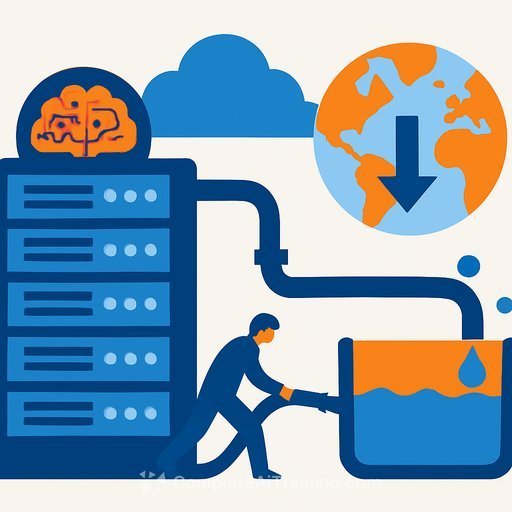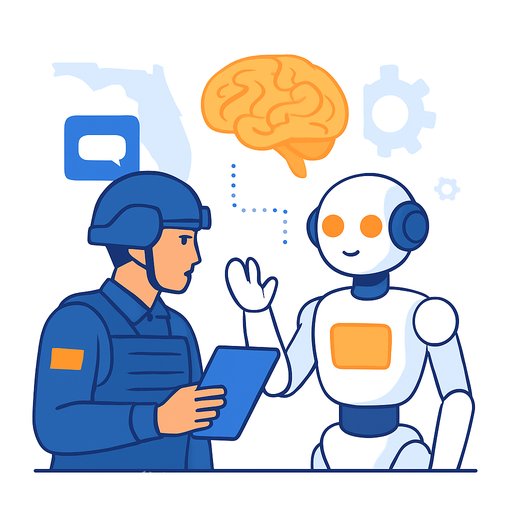Compliance and AIOps: The Role of GRC in IT Operations
AIOps (Artificial Intelligence for IT Operations) depends heavily on real-time data and automation to boost IT efficiency and security. Qmulos’ Q-Compliance platform supports AIOps by delivering a data-driven, automated approach to Governance, Risk, and Compliance (GRC). Here’s how it integrates seamlessly with IT operations.
Real-Time Data Collection and Analysis
Q-Compliance continuously gathers data from on-premise and cloud sources, analyzing it in real time. This immediate processing helps spot compliance gaps and security weaknesses as they occur. This live data flow is essential for AIOps, which thrives on processing large volumes of operational information to provide actionable insights.
Fueling AI and Machine Learning Algorithms
Effective AIOps requires a steady influx of detailed operational data. Q-Compliance supplies this by collecting information from networks, systems, and devices across environments. This rich, dynamic data set allows AI and machine learning models to detect patterns, spot anomalies, and predict system and compliance issues before they escalate.
Proactive Compliance and Risk Management
Instead of relying on periodic audits, Q-Compliance supports a proactive monitoring model. It flags compliance gaps and security risks immediately, enabling quick remediation. When combined with AIOps, these real-time insights can predict potential drifts or vulnerabilities and assign risk scores to incidents, streamlining incident management.
Actionable Insights from Big Data
IT environments generate massive amounts of data that are difficult for humans to analyze manually. Q-Compliance, built on a big data platform like Splunk, can ingest and correlate diverse datasets quickly. This capability allows AIOps to extract meaningful insights, automate responses, and guide human intervention where needed. Guidelines for affected controls can be embedded into AIOps algorithms to determine necessary actions.
Enabling Continuous Monitoring and Automation
With real-time data collection, compliance status is always current. Continuous monitoring of controls becomes possible, and when paired with AIOps, this can trigger automatic compliance checks, generate alerts, or even start remediation workflows. This approach improves the efficiency and reliability of GRC operations.
Automation of Compliance Tasks
Q-Compliance automates technical evidence collection, compliance alerts, and test case evaluations using custom Splunk alerts. Automating these tasks reduces manual effort and aligns with AIOps principles that focus on automating IT operations.
Reduced Manual Overhead and Human Error
Automation of evidence collection and compliance assessments lowers the risk of human error and frees cybersecurity teams to concentrate on strategic priorities. This consistent and accurate data is vital for the success of AI and machine learning models in AIOps.
Increased Speed and Efficiency
Automated compliance processes operate at machine speed, enabling rapid detection of compliance issues. This agility supports faster decision-making and response times essential for effective AIOps implementation.
Enhanced Proactive Anomaly Detection and Response
Automated compliance checks immediately flag deviations or failures, such as non-compliant configurations. AIOps platforms can use these signals to detect anomalies early and trigger automated remediation or incident response workflows, preventing minor issues from becoming major breaches.
Improved Data Reliability for AI/ML
Reliable, standardized data is crucial for AI and machine learning effectiveness. Q-Compliance’s automation ensures consistent data collection and assessment, improving the quality of inputs for AIOps analytics and predictions.
Supporting Continuous Authority to Operate (cATO) and Continuous Assurance
For organizations with strict regulatory requirements, maintaining continuous authorization depends on ongoing risk management. Q-Compliance provides continuous assurance by delivering immediate feedback on security posture and risks. AIOps enhances this by automating control verification and risk assessments, enabling dynamic authorization decisions.
Leveraging Big Data Analytics (Splunk-Powered)
- Massive Data Ingestion and Management: Q-Compliance, built on Splunk, handles huge volumes of logs, metrics, events, and configurations. This capability provides the foundation AIOps needs to analyze operational data effectively.
- Advanced Data Correlation and Contextualization: Splunk’s search and indexing tools enable Q-Compliance to correlate disparate data points across compliance and security domains. This contextualized data is essential for AI/ML to generate accurate, actionable intelligence.
- Unified Data Source for GRC and Operations: Combining compliance data with broader IT operational data breaks down silos. This unified data lake improves visibility and supports integrated decision-making.
- Scalability for Evolving Demands: As IT and regulatory complexities grow, Splunk’s scalability ensures Q-Compliance can support expanding AIOps needs without performance loss.
Enhanced Visibility and Insights
Q-Compliance offers dynamic dashboards for executives and operations teams, showing real-time compliance and security status. This transparency supports data-driven risk management and aligns with AIOps goals of turning raw data into practical intelligence.
Data for AI/ML-Driven Decision Making
Comprehensive, high-quality data powers AI and machine learning models in AIOps. Executive dashboards provide clear compliance scores across the enterprise with drill-downs into specific departments and systems. This rich dataset underpins predictive modeling and strategic governance decisions.
Accelerated Root Cause Analysis
When anomalies or compliance gaps arise, Q-Compliance’s detailed dashboards help teams quickly identify root causes. Faster troubleshooting reduces downtime and risk, key benefits of AIOps integration.
Unified Operational and Compliance Awareness
Q-Compliance bridges IT operations and GRC by presenting complex compliance data in accessible dashboards. AIOps adds operational performance data to this view, giving a complete picture of IT health, security, and compliance. This holistic perspective supports better management decisions.
For those interested in exploring AI and automation further, resources like Complete AI Training on automation offer practical courses that align well with these concepts.
Your membership also unlocks:






